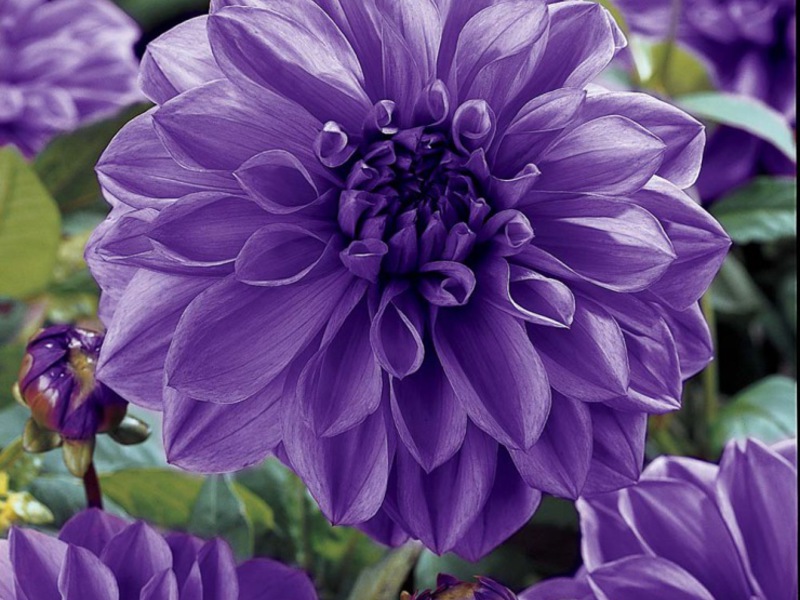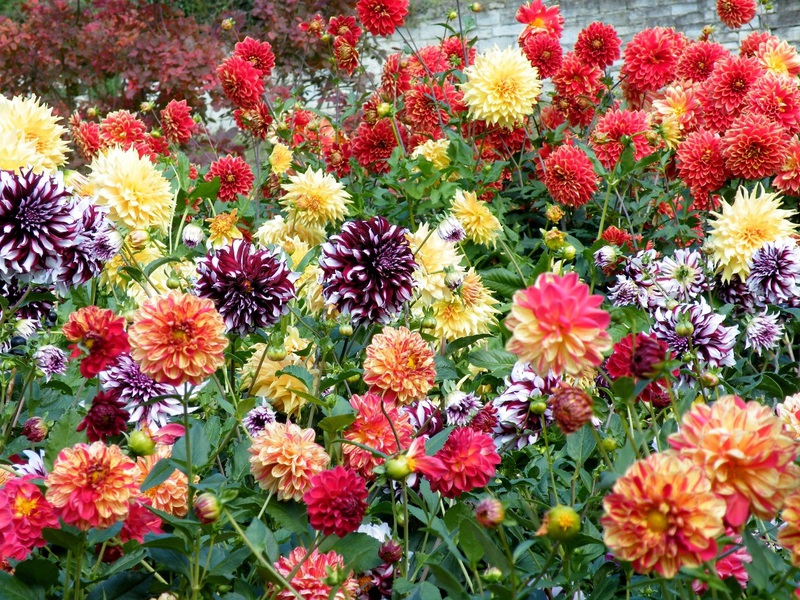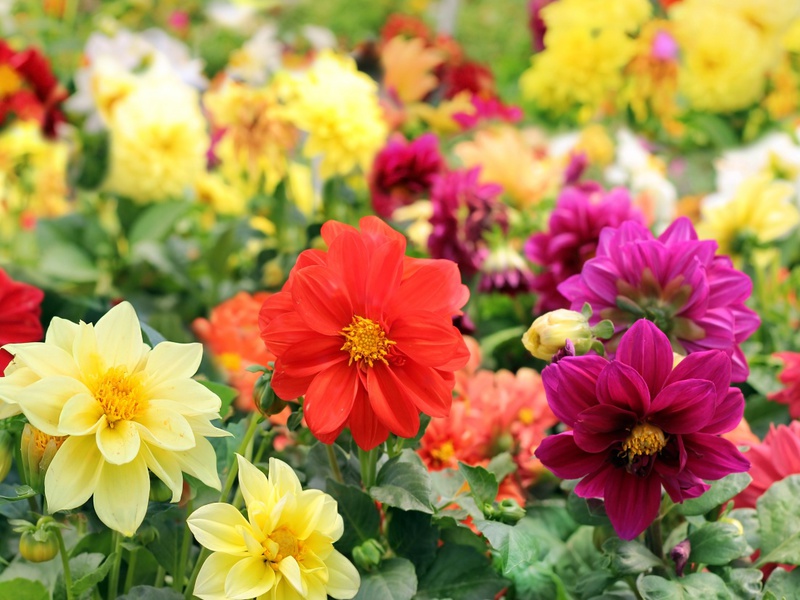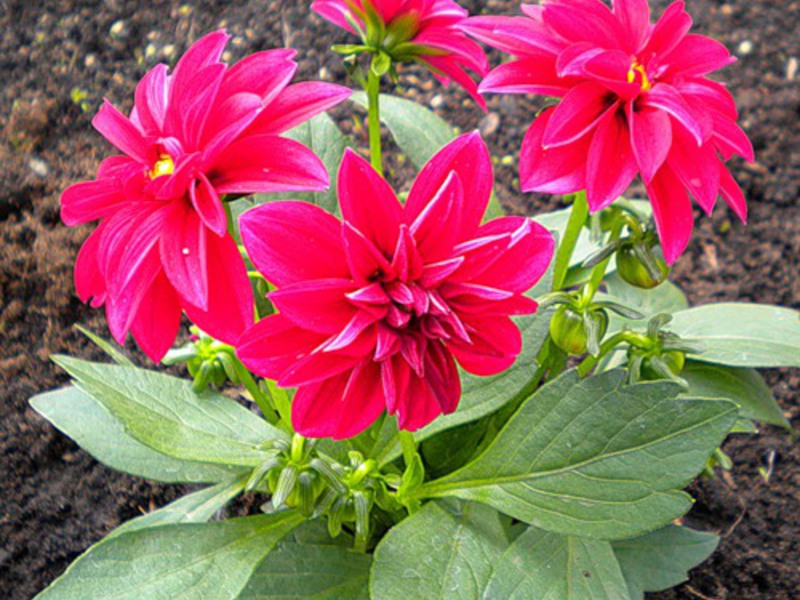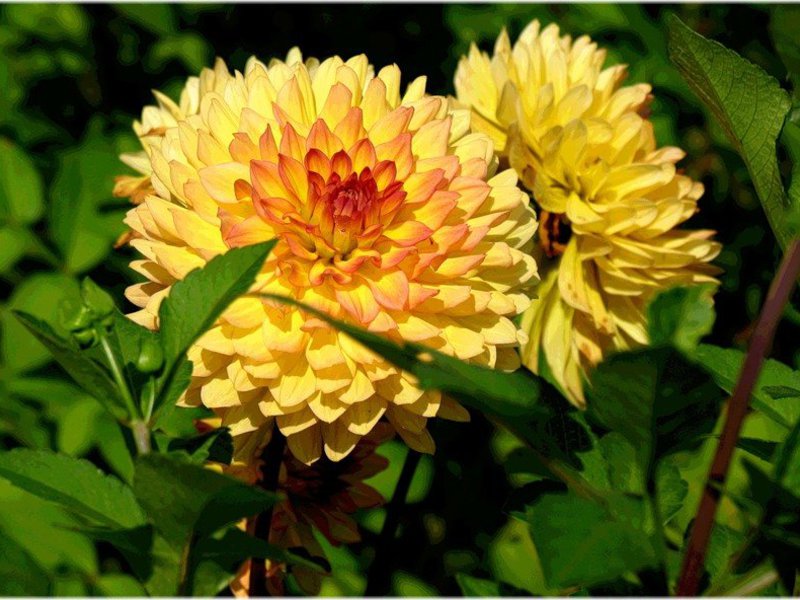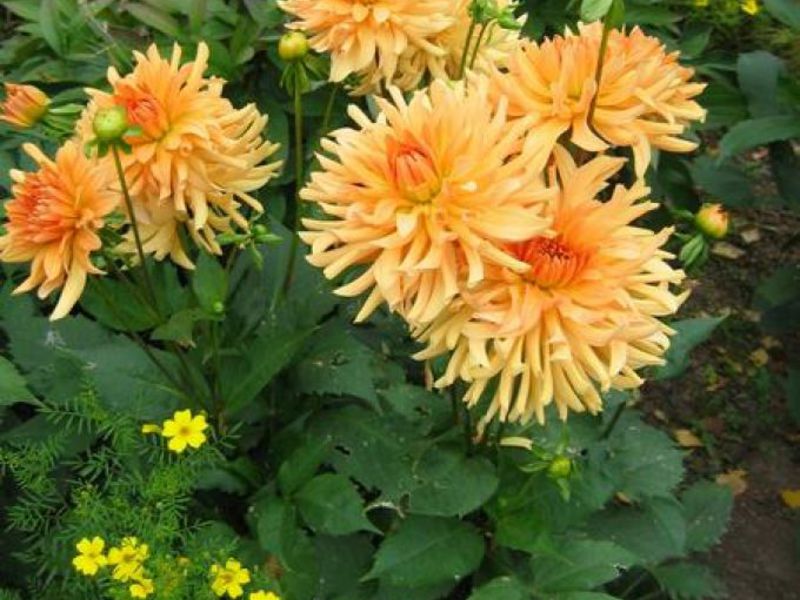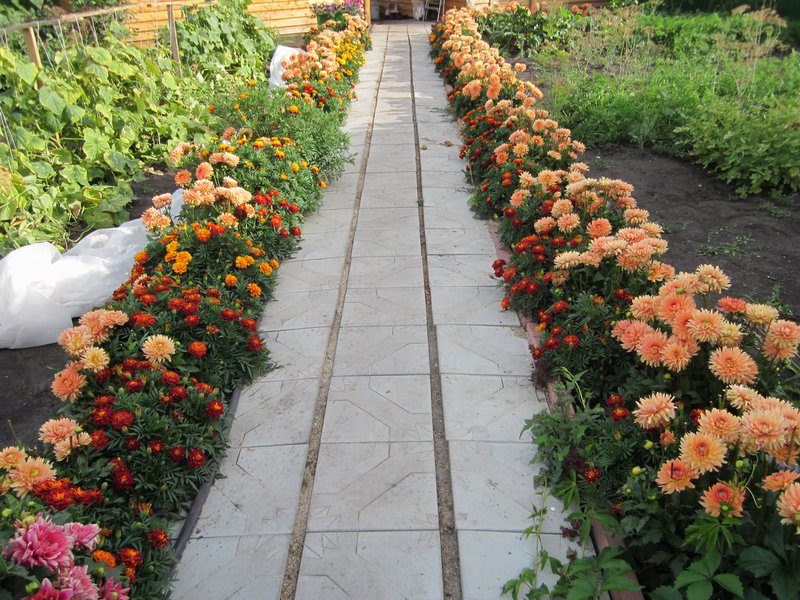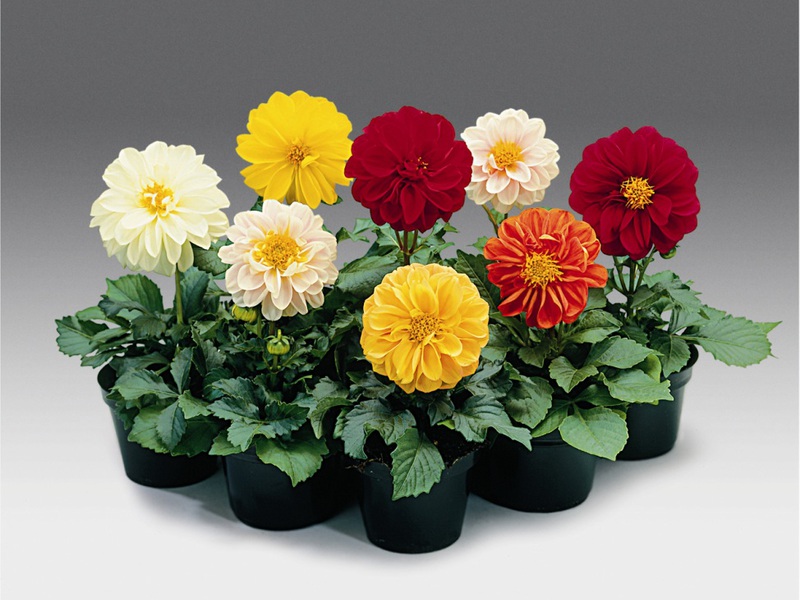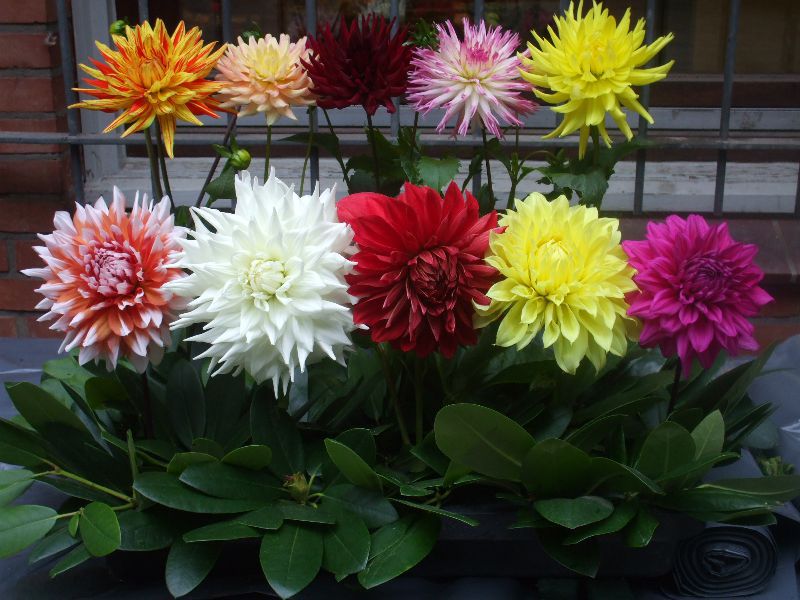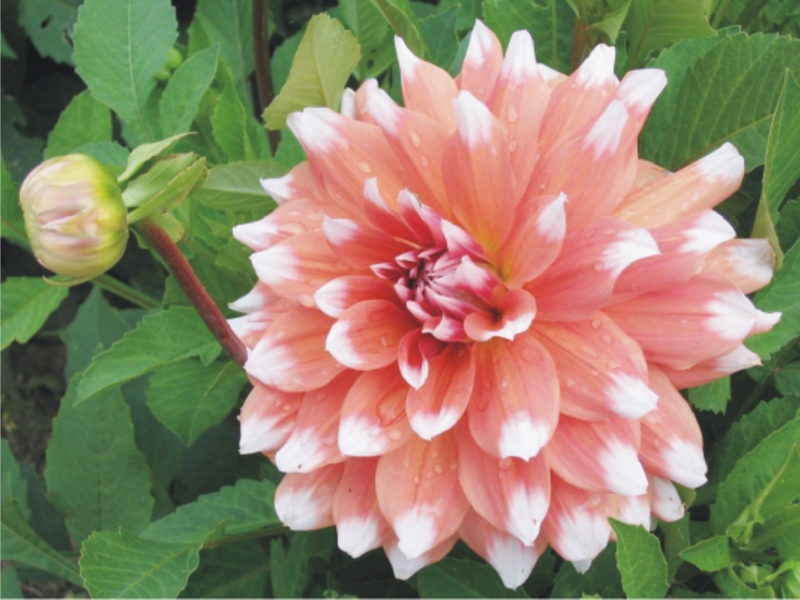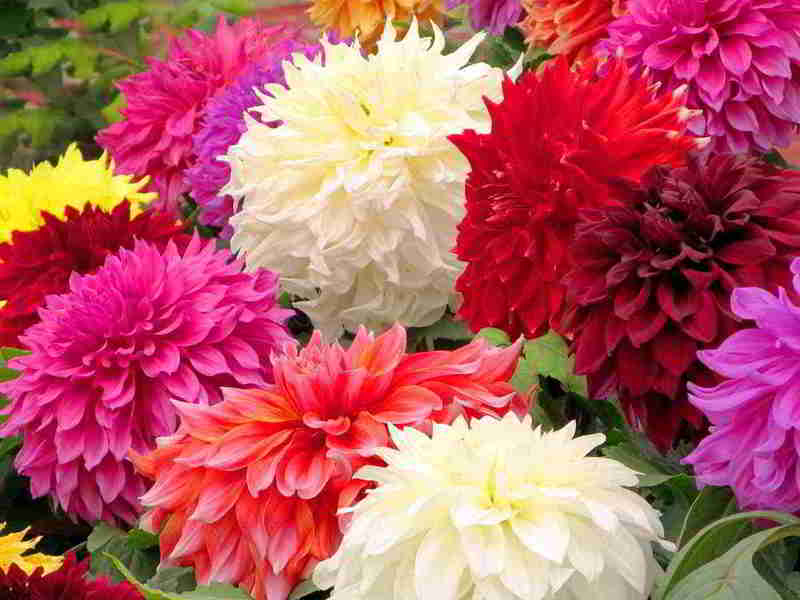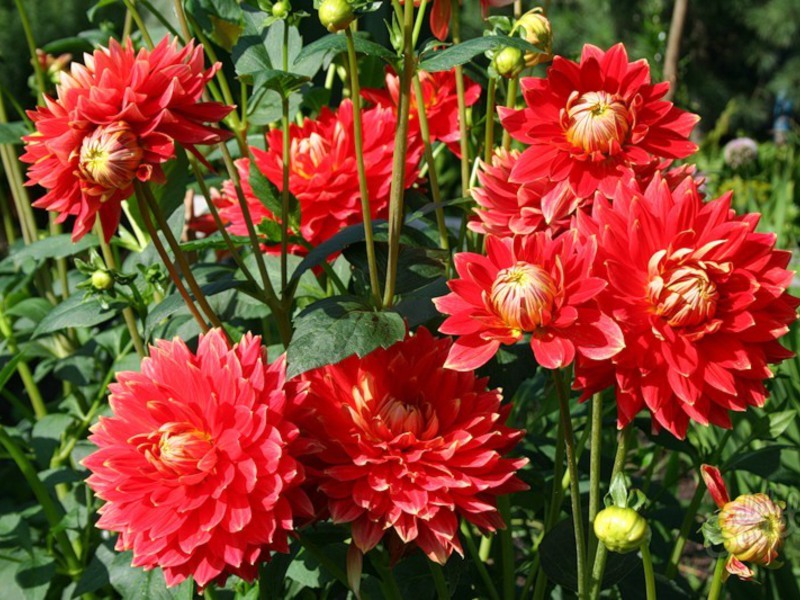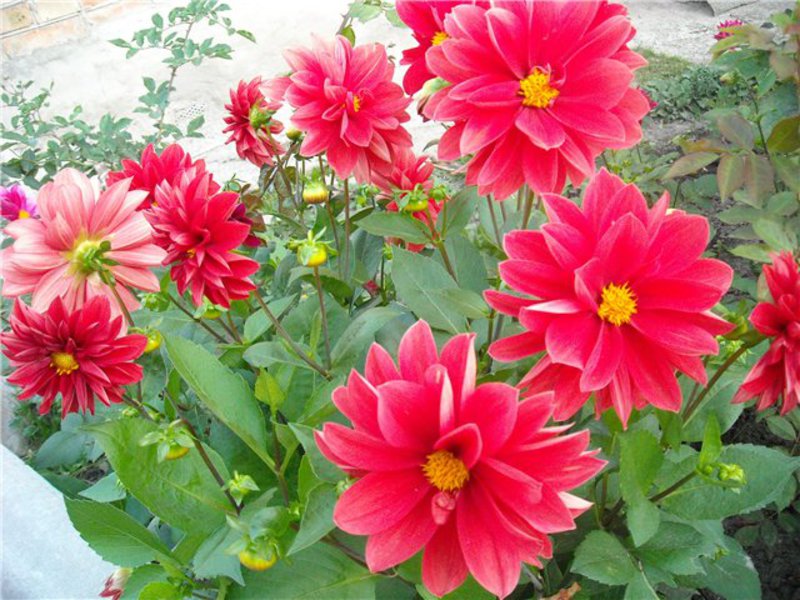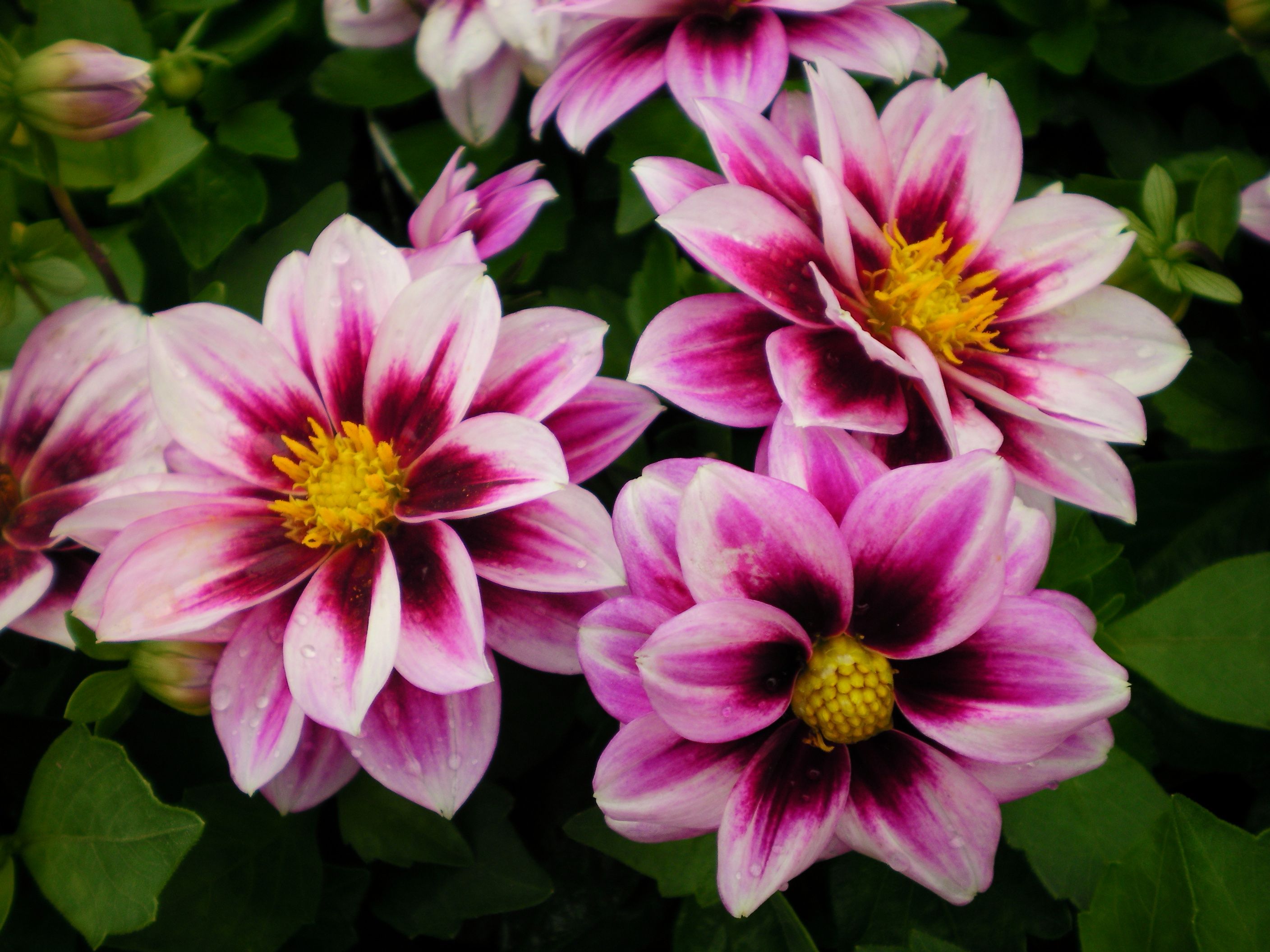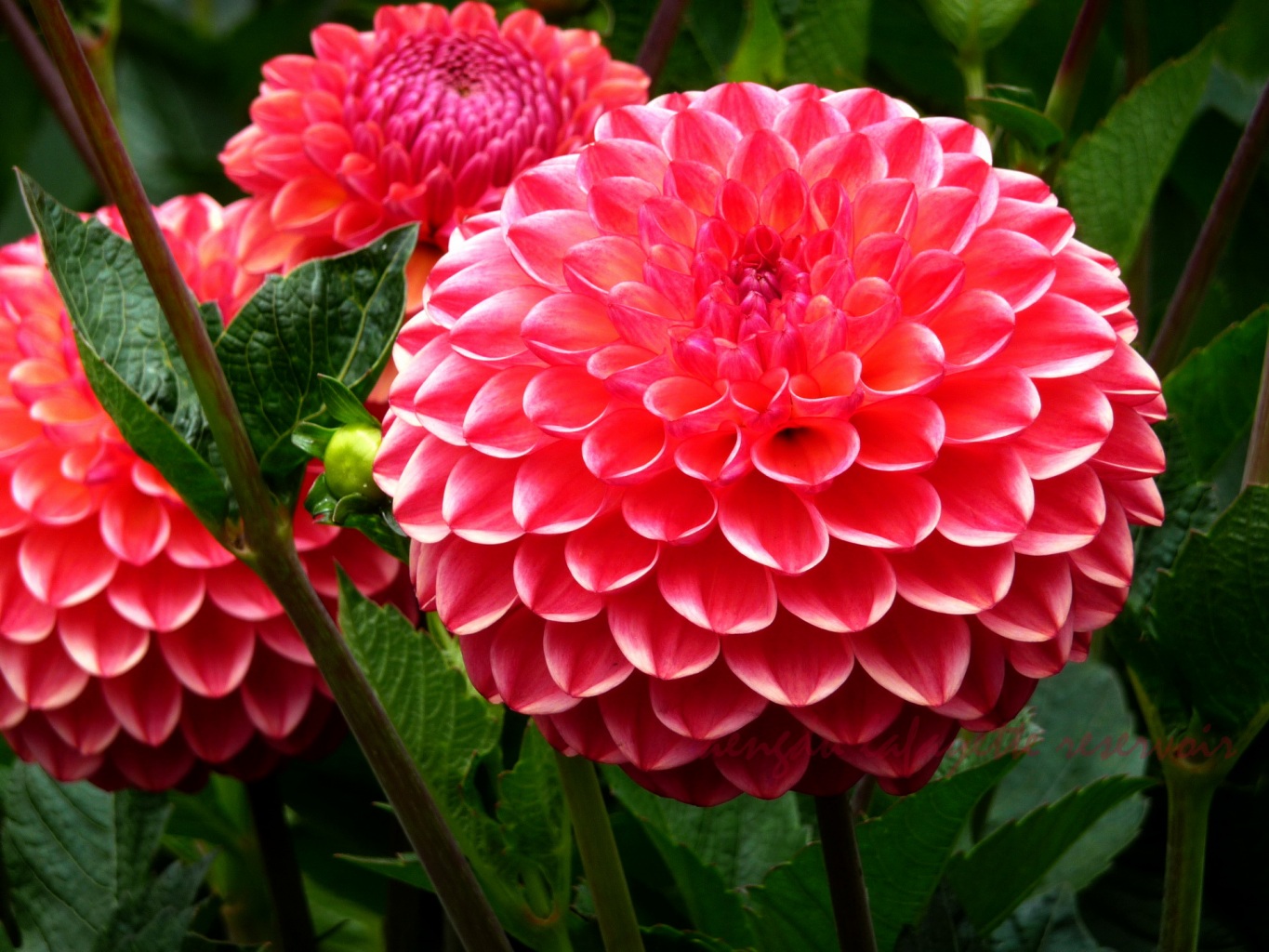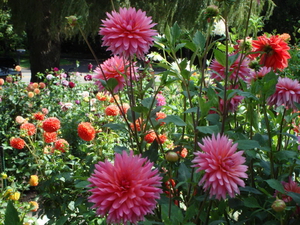Among the perennial ornamental plants in open ground, the leading positions are occupied by dahlias of various colors and shapes. They are easily recognizable by their feathery leaves, erect stems and chic flowers. They are able to delight with their flowering for two to three months. Planting and caring for dahlias for gardeners is exciting and painstaking at the same time. We will tell you about all the intricacies of growing different types of these amazing flowers in the open field in this article.
Content
General description, varieties and photos of dahlias
Dahlias belong to the tuberous plants of the Aster family, native to Mexico. The ancient Aztecs used the roots of the flower for food. Dahlias were brought to Europe at the end of the 18th century, where the grace and amazing beauty of the flower were appreciated.
There are currently more than fifteen thousand varieties this amazing plant. Some can be dwarf and reach a height of only 30 cm. Others grow over 120 cm in height. Dahlias also differ in flower size. Miniature buds are less than 10 cm in diameter. Small, medium and large flowers reach 10 to 25 cm in diameter, and giants are more than 25 cm in diameter.
All dahlias by flower shape are classified into the following types:
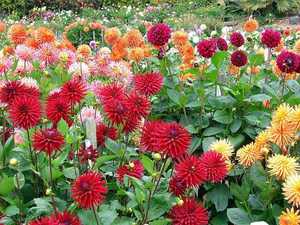 Simple varieties grow up to 45-60 cm in height and have small tubular petals in the center and one row of marginal petals. The diameter of their flower is about 10 cm.
Simple varieties grow up to 45-60 cm in height and have small tubular petals in the center and one row of marginal petals. The diameter of their flower is about 10 cm.- Nymphaean double dahlias grow to a height of 70-130 cm and are distinguished by beautiful, regular-shaped flowers with a diameter of 7-20 cm. They are very similar to water lilies.
- Semi-cactus varieties are plants 90-150 cm high.Their double inflorescences consist of pointed, folded edge petals and reach a diameter of 8-25 cm.
- Cactus double flowers are distinguished by narrow, pointed, curled edge flowers and an inflorescence diameter of 8-25 cm.The height of the bush is 90-150 cm.
- Pompon dahlias reach a height of 90-120 cm. Their double inflorescences are in the shape of a ball with a diameter of less than 5 cm. Rolled edge petals are distinguished by a rounded or blunt end.
- Spherical varieties are bushes with a height of 90 to 120 cm, on the shoots of which flattened terry inflorescences are formed in sizes of 8-15 cm. Their rolled edge flowers have a rounded or blunt end.
- Decorative dahlias grow up to 90-150 cm in height. Terry inflorescences of orange, yellow, pink, red, purple color with a diameter of 8-25 cm are distinguished by wide marginal petals with a blunt end.
- Peony species have tubular petals in the center and several rows of flat marginal petals. The height of the bush is from 75 to 120 cm.The diameter of the lilac, crimson, red inflorescences is 12-15 cm.
- Vortonichkovye varieties are a bush 75-120 cm high. Their inflorescences are distinguished by an interesting color. They can have red, yellow or scarlet outer flat petals and cream or gold slightly curled inner petals.
- Anemiform dahlias are plants with red, purple-yellow, bronze flowers up to 10 cm in diameter. Their inflorescences consist of an elongated large tubular center and several marginal petals. The height of the bush reaches 60-90 cm.
Features of growing dahlias in the open field
Late May or early Junewhen the soil warms up, dahlias can be planted in open ground. Plants are not very demanding to the place. They will grow even in the shade, but the color and size of the inflorescences may suffer. To get beautiful buds, it is recommended to plant dahlias in light partial shade, where they will bloom for a long time.
When choosing a site, it is necessary to take into account the level of soil moisture, since the tubers of the plant are prone to decay. The soil for dahlias should be well-drained. It is not recommended to plant them in lowlands.
Tuber preparation
Plants grow well on a fertile black soil, sandy soils and loam... Tubers for planting must begin to be prepared in April:
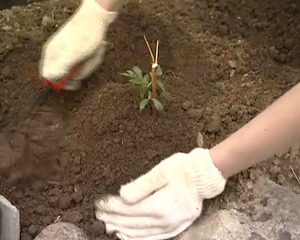 Remove dry roots.
Remove dry roots.- Remove and treat damaged areas with brilliant green.
- Plant in boxes or other containers with peat or nutrient soil, and store for two weeks at an air temperature of + 18C. Planting should be carried out so that the tubers protrude 2-3 cm above the soil surface.
- After the buds appear, each tuber is divided into parts with a knife. Each section should have a bud with a root collar. One tuber can produce up to five such parts.
Delenki sprout for some time in containers. Before landing in open ground from them lateral shoots 10 cm high are removed.
Soil preparation
The soil for planting dahlias is prepared in the fall. The site is dug up and fertilized with compost and humus. Before planting in the spring, some wood ash and mature (not deciduous) compost are scattered over the soil. Everything is stirred with a rake.
The size of the pits should be such that the roots are completely immersed in them, and there is still room for fertilization. At the bottom of each hole, a little manure or rotted humus is poured, which is sprinkled with earth. In this case, the roots will not get burned. The sprouted tuber is buried so that a few centimeters of the shoot remain above the soil surface. The seedlings are watered abundantly, and the soil around them is covered with mulch. Mixed with compost or peat are used as mulch sawdust or bark.
Next to tall dahlias, you must immediately install a support. It is not recommended to plant dahlias in the same place every year. They will be sick and may degenerate. The soil should rest from them for about three years.
Dahlia care
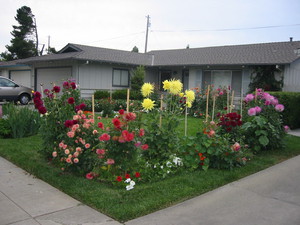 During the season, if it does not rain, the plants are watered once or twice a week. After watering, especially in extreme heat, the bushes spud. This helps to retain moisture in the soil. In the next watering, the soil is raked away from the stems, watered, and the plant spud again. Will not allow the soil to dry out quickly and mulching the site. In addition, mulch protect the soil from slugs and will facilitate work on weeding and loosening.
During the season, if it does not rain, the plants are watered once or twice a week. After watering, especially in extreme heat, the bushes spud. This helps to retain moisture in the soil. In the next watering, the soil is raked away from the stems, watered, and the plant spud again. Will not allow the soil to dry out quickly and mulching the site. In addition, mulch protect the soil from slugs and will facilitate work on weeding and loosening.
Feeding dahlias
In order to get a beautiful and long flowering when growing dahlias, they need to be fed every two weeks. Complex mineral fertilizers alternate with organic ones. As soon as the first buds appear, potash fertilizers and superphosphate are applied under each bush.
Pruning and supporting dahlias
Throughout the season, it is necessary to remove faded buds so as not to delay the appearance of new ones. In high varieties of dahlias, it is recommended to remove the lower side shoots. In single and undersized bushes, this can be omitted.
To get large inflorescences, on one bush leave no more than three buds... With a large number of inflorescences, the size of the flowers will be smaller and less decorative.
Hollow dahlia stems break easily when the wind blows. Therefore, tall plants are tied to a support. With careful care of the dahlia bushes, you can have time to save the newly broken stem. To do this, a stick or a strong branch is tied to it.
Storing tubers in winter
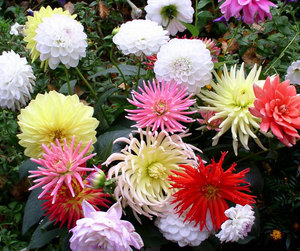 In late September - early October, after the selection of the stems and the onset of severe frosts, dahlia tubers must be dug up. It is recommended to do this in dry weather in order to have time to dry them in the air. In a few days, the stems are cut from the bush, which are covered with aluminum foil. Into naked stems moisture can get inand they will start to rot.
In late September - early October, after the selection of the stems and the onset of severe frosts, dahlia tubers must be dug up. It is recommended to do this in dry weather in order to have time to dry them in the air. In a few days, the stems are cut from the bush, which are covered with aluminum foil. Into naked stems moisture can get inand they will start to rot.
The tubers are dug in at a distance of 30 cm on four sides. The pitchfork is pushed under the long roots and pushed out. Tubers and roots are shaken off the ground, washed with a hose and laid out to dry.
Proper storage and care of tubers in winter is of great importance when growing dahlia. Poorly dried tubers can rot, and too dry - give weak shoots in spring. It is recommended to store dahlia planting material in a well-ventilated room with an air humidity of 60% and at a temperature within 3-5C.
Before putting the tubers for storage, mechanical damage must be cut off and sprinkle with crushed charcoal... Planting material is laid in containers with dry sand, peat or coniferous sawdust. If the tubers begin to wilt or dry out, the peat is slightly moistened. In a room where there is no natural ventilation, you must turn on the fan three times a week for thirty minutes.
Dahlia pests and diseases
Earwigs, caterpillars, spider mites, horseflies and aphids are the most dangerous plant pests. When they first appear, the bushes every seven days in the evenings are recommended to be treated with a decoction of celandine or wormwood. For aphids, you can use a soap solution. If there are many pests, then insecticidal treatment is necessary.
Young shoots attract slugs, which usually appear during the rainy season. For prevention, the soil around the plants is sprinkled with a special slug repellent. If there is a lot of wireworm in the soil, then chlorophos is embedded in it with a rake.
Caused by viruses spotted and mosaic wilting are not amenable to treatment. In order not to infect other plants, the diseased bush is dug up and burned along with the tubers.
Dahlia breeding methods
The plant can be propagated in three ways:
- dividing the tuber;
- cuttings;
- seeds.
Tuber division
In mid-March, healthy tubers are selected to germinate. They are pre-cleaned of damaged parts and soaked for 15 minutes in a solution of potassium permanganate. The planting material is planted in containers with moist soil. In this case, the root collar should remain open. After the eyes reach a size of 1.5 cm, the tubers are pulled out of the ground and cut into several pieces... Each part with one eye and root collar is planted in a separate pot. The incision site of the root collar is not deepened.
Cuttings
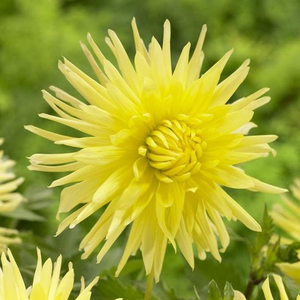 Cutting is the easiest and most effective way to propagate and grow dahlias. It is held in late March - early April. Tubers for grafting are prepared in the same way as for propagation by division. Caring for them consists in timely watering the soil. As soon as the cuttings grow 5-10 cm, they will need to be cut off under the bottom leaf and placed in water or a mixture of peat and sand for rooting.
Cutting is the easiest and most effective way to propagate and grow dahlias. It is held in late March - early April. Tubers for grafting are prepared in the same way as for propagation by division. Caring for them consists in timely watering the soil. As soon as the cuttings grow 5-10 cm, they will need to be cut off under the bottom leaf and placed in water or a mixture of peat and sand for rooting.
In open ground cuttings land in late May - early June... The holes for them should be slightly larger than a clod of earth in a pot. Plants shed well before planting. Cuttings are placed in the planting hole.The space between the lump and the walls of the hole is evenly filled with soil. Watering the cuttings after planting is recommended after a couple of days.
Seed propagation
Seeds propagate annual dwarf varieties of dahlias and plants for decorating ridges and borders. Dahlias planted in May with seeds will bloom only in early August. To get a flowering plant in mid-summer, seeds are sown in a greenhouse in April. Sand is used as a soil for sowing seeds.
The seeds are sown moistened and covered with a film... They germinate at an air temperature of 25C. When real leaves appear, the sprouts dive into separate containers with loose soil. Young plants are planted in open ground in mid-May.
Growing dahlias outdoors is not such a difficult task. With proper planting and adherence to all simple care recommendations, from mid-summer to the very frost, gorgeous inflorescences framed with emerald greens will flaunt in the garden.
